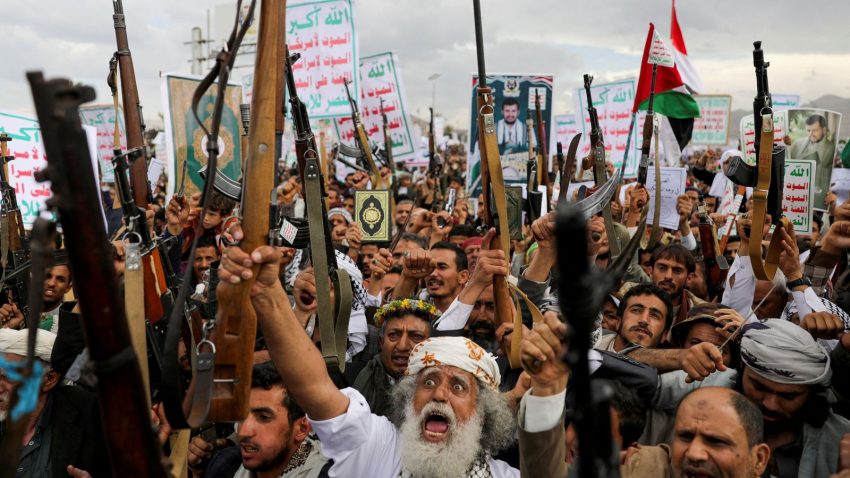Yemen’s Houthi rebel group has said 15 people have been injured in “US-British” airstrikes in and around the capital Sanaa.
Most of those hurt were from the Shuub district, near the centre of the city, a statement from the health ministry said.
Another person was injured on the main airport road, the statement added.
It remains unclear what role the UK played in the latest strikes.
On 29 April, the British government said that UK forces took part in a joint strike on “a Houthi military target in Yemen”.
“Careful intelligence analysis identified a cluster of buildings, used by the Houthis to manufacture drones of the type used to attack ships in the Red Sea and Gulf of Aden, located some fifteen miles south of Sanaa,” the British Ministry of Defence said in a previous statement.
Airport strike
It comes after Israeli Prime Minister Benjamin Netanyahu vowed to retaliate against the Houthis and their Iranian “masters” following a missile attack by the group on Israel’s main international airport on Sunday morning.
The militant group fired a missile at the Ben Gurion Airport, sparking panic among passengers in the terminal building.
The missile impact left a plume of smoke and briefly caused flights to be halted. Some international carriers cancelled flights to and from Tel Aviv for several days.
Four people were said to have suffered minor injuries, according to the country’s paramedic service.
The Houthis claimed they would impose a “comprehensive” aerial blockade on Israel by repeatedly targeting its airports.
The move came in response to Israel expanding its operations in Gaza.
Most attacks from Yemen are intercepted by Israeli missile defence systems, including the Iron Dome.
Gaza offensive
Meanwhile, Mr Netanyahu’s security cabinet reportedly approved a gradual expansion of the country’s offensive against Hamas in Gaza, according to broadcaster Kan.
The outlet cited sources with knowledge of the details of the move.
The Israeli military has already begun issuing tens of thousands of call-up orders to its reserve forces as it looks to expand its campaign in the enclave, Lieutenant General Eyal Zamir said in a statement on Sunday.
Since the collapse of an earlier ceasefire agreement in March, Israeli soldiers have been carving out wide buffer zones in Gaza.
In the process, they have squeezed Gaza’s 2.3 million population into a narrower zone in the centre of the enclave and along the coast.
Alongside that, they have blocked aid going into Gaza in an effort to pressure Hamas to negotiate over the release of hostages.
Aid groups have warned that the Israeli blockade risks a humanitarian disaster.



